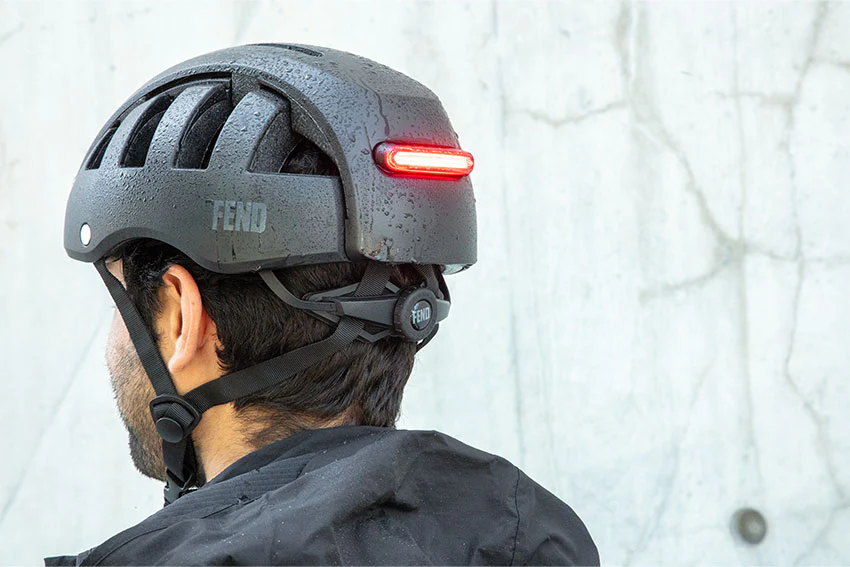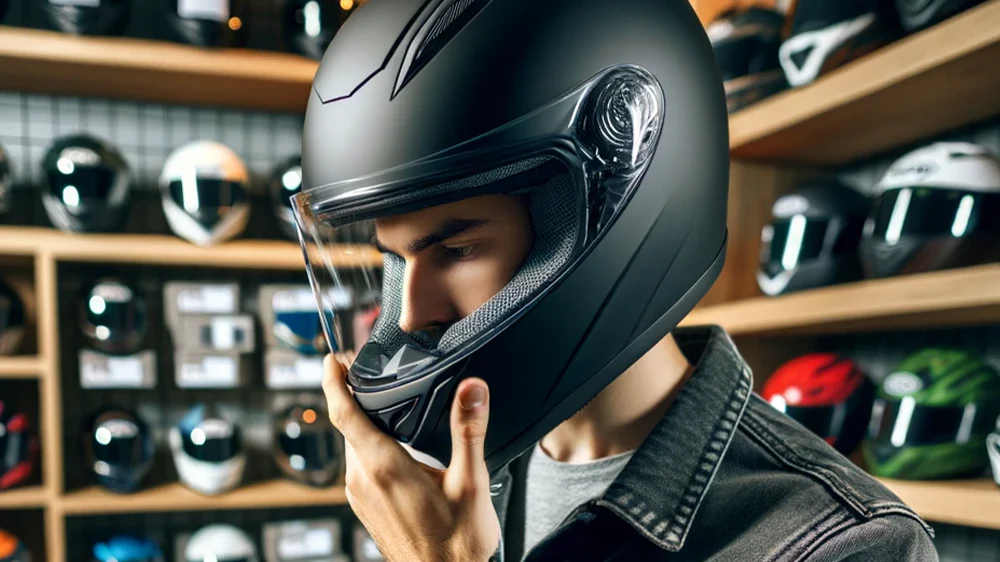When it comes to motorcycle helmets, the outer shell gets most of the attention. However, the inner lining of a helmet plays a crucial role in ensuring comfort, fit, and safety. The helmet liner serves as the buffer between your head and the hard outer shell, providing cushioning, moisture-wicking properties, and overall comfort. Whether you’re a long-distance rider or someone who rides for short commutes, choosing the right helmet liner is essential for a pleasant and secure riding experience. In this article, we’ll take a look at the various helmet liner options, their benefits, and how to choose the best one for your needs.
1. What is a Helmet Liner?
A helmet liner is the soft, padded material inside the helmet that touches your head. Its main purpose is to:
-
Provide Comfort: The liner cushions your head and helps prevent discomfort during long rides.
-
Absorb Impact: The liner plays a role in absorbing impact during a crash, helping to reduce the severity of injury.
-
Wick Away Moisture: Liner materials are often designed to wick away sweat, keeping your head dry and comfortable.
-
Improve Fit: Some liners offer adjustable padding that allows you to customize the fit of your helmet.
A good helmet liner enhances both comfort and safety, ensuring that your ride is as enjoyable as it is secure.
2. Types of Helmet Liner Materials
Helmet liners come in a variety of materials, each offering different benefits in terms of comfort, moisture management, and durability. Here’s a breakdown of the most common liner materials:
1. Foam Liners
Foam is the most common material used in helmet liners, and there are several types of foam that offer varying levels of comfort and protection:
-
EPS (Expanded Polystyrene) Foam: EPS foam is the most common type used in the inner shell of the helmet. It provides impact absorption and plays a significant role in reducing the force transmitted to your head in the event of a crash. This foam is lightweight and designed to compress on impact, which helps dissipate energy.
-
Multi-Density Foam: Multi-density foam features different layers with varying hardness levels, offering enhanced comfort and better impact protection. Softer layers absorb lower impacts, while denser layers protect against higher-energy impacts.
Benefits of Foam Liners:
-
Highly effective at absorbing impact and providing safety.
-
Lightweight and comfortable for long rides.
-
Affordable option found in most entry-level helmets.
2. Memory Foam Liners
Memory foam is a popular choice for premium helmets. It conforms to the shape of your head, creating a personalized fit. Memory foam liners provide a higher level of comfort by adapting to your head shape over time, reducing pressure points.
Benefits of Memory Foam Liners:
-
Superior comfort and custom fit.
-
Relieves pressure points, making long rides more comfortable.
-
Ideal for riders with sensitive areas on their head.
3. Gel Liners
Gel liners, often found in high-end helmets, are designed to offer both comfort and impact protection. These liners use a gel-based material that molds to the shape of your head and absorbs shock efficiently. Gel liners are often combined with foam for extra cushioning.
Benefits of Gel Liners:
-
Offers additional impact absorption compared to traditional foam liners.
-
Excellent for reducing helmet fatigue and enhancing comfort.
-
Provides superior fit and feels more custom, adapting to head shape.
4. Removable and Washable Liners
Removable and washable liners are one of the most convenient options available. These liners are usually made of moisture-wicking materials like microfiber or other synthetic fabrics. Being able to remove and wash the liner is essential for maintaining hygiene, especially for riders who ride frequently.
Benefits of Removable and Washable Liners:
-
Easy to clean and maintain.
-
Prevents odor buildup and keeps your helmet fresh.
-
Ideal for riders who wear their helmets frequently or in hot climates.
5. Anti-Microbial Liners
To combat sweat, odors, and bacteria buildup, many helmets feature anti-microbial liners. These liners are made from materials that prevent the growth of bacteria, fungi, and other microbes that thrive in moist environments. Anti-microbial treatments keep your helmet fresh and hygienic, especially during long rides or in hot weather.
Benefits of Anti-Microbial Liners:
-
Prevents odors and bacteria growth, keeping your helmet fresh.
-
Improves comfort by reducing irritation and itching caused by sweat.
-
Ideal for riders in warmer climates or those who sweat heavily.
3. Helmet Liner Features to Consider
When choosing a helmet liner, there are a few additional features to keep in mind to maximize comfort and safety:
1. Ventilation and Breathability
A well-ventilated liner helps reduce sweat buildup and keeps your head cool during long rides. Look for liners made of breathable, moisture-wicking fabrics that allow air to circulate. Some premium helmets feature advanced ventilation systems integrated into the liner to keep you cool on hot days.
2. Adjustable Padding
Many helmets come with adjustable padding inside the liner. This feature allows you to customize the fit of the helmet by adding or removing padding, ensuring a snug and secure fit. If you have a slightly larger or smaller head, adjustable padding can make a huge difference in comfort.
3. Sweat Wicking
Sweat-wicking liners are particularly useful for riders who ride in hot or humid climates. These liners are designed to draw moisture away from the skin and evaporate it, preventing the helmet from becoming damp and uncomfortable. Some liners incorporate advanced fabrics like CoolMax® to enhance sweat absorption.
4. Impact Protection
In addition to comfort, some helmet liners are designed to offer additional protection. Liner technologies such as MIPS (Multi-Directional Impact Protection System) provide an extra layer of safety by allowing the helmet to move slightly in the event of a rotational impact, reducing the risk of brain injury.
4. How to Choose the Right Helmet Liner
Choosing the right helmet liner comes down to balancing comfort, safety, and fit. Here are a few considerations to help you choose the right liner for your needs:
1. Riding Style
If you’re a daily commuter or short-distance rider, a basic foam or memory foam liner may suffice. For long-distance touring or adventure riding, you may want to opt for a gel or multi-density foam liner for enhanced comfort and impact protection.
2. Climate
Riders in warmer climates may benefit from removable, washable, and sweat-wicking liners to keep their helmets fresh. In colder climates, consider a liner that offers insulation and moisture control to prevent fogging and discomfort.
3. Fit and Comfort
For riders who prioritize comfort, memory foam or gel liners are ideal since they provide a personalized fit. If you’re sensitive to pressure points or plan on wearing your helmet for long hours, these options can significantly improve comfort.
4. Hygiene and Maintenance
If hygiene is a concern, look for a helmet with a removable, washable liner, or one that features anti-microbial properties. Being able to clean the liner regularly ensures a fresh and comfortable experience every time you ride.
Conclusion: Finding the Perfect Helmet Liner for You
The helmet liner is an essential component of your motorcycle helmet that directly impacts comfort, fit, and safety. Whether you’re looking for a foam, memory foam, gel, or antimicrobial liner, there are plenty of options available to suit your riding style and needs. By considering factors such as comfort, fit, ventilation, and maintenance, you can select the right liner to enhance your overall riding experience.
Investing in a high-quality liner is one of the best ways to improve both the safety and comfort of your helmet. After all, a comfortable helmet makes every ride safer and more enjoyable.









